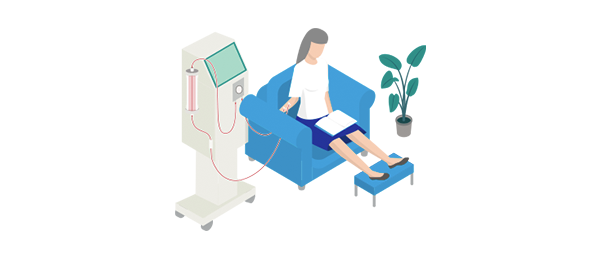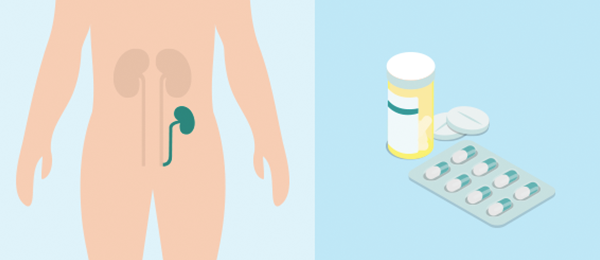Peritoneal Dialysis at Home
Peritoneal dialysis (PD) is a therapy option that uses the lining of your own abdomen to remove waste products from your blood. Here you can learn more about doing peritoneal dialysis (PD) at home.
What is Peritoneal Dialysis (PD)?
If you’re starting dialysis, peritoneal dialysis (PD) might be one of the treatment options available to you. Peritoneal dialysis (PD) is usually done at home and can even be done while you sleep. It is also possible to do peritoneal dialysis (PD) treatments while you travel. So, it might be the right therapy if remaining mobile or having a flexible treatment schedule are important to you.

What is Continuous Ambulatory Peritoneal Dialysis (CAPD)?
CAPD is a type of peritoneal dialysis (PD) that uses gravity, rather than a machine, to “exchange” your old dialysis solution for fresh solution.

What is Automated Peritoneal Dialysis (APD)?
APD is a form of peritoneal dialysis (PD) that uses a machine called a cycler to perform dialysis exchanges. The cycler is programmed to provide you the exact amount of dialysis prescribed by your clinician. Typically, an APD programme lasts between 8 and 12 hours, and is performed overnight.

Remote Patient Management with Automated Peritoneal Dialysis (APD)
You and your clinician may consider using Remote Patient Management to manage your APD treatments. Remote Patient Management allows your clinician to follow your treatment and ensure you are on the right track, which may increase your confidence about doing your treatment at home.

Learning to Perform Peritoneal Dialysis (PD)
The idea of performing peritoneal dialysis (PD) at home may make you feel anxious, but it is actually quite a manageable process. Almost everybody can perform peritoneal dialysis (PD) with proper training. In most cases, this will usually require between 2 and 5 days of training, depending on what type of PD therapy you choose.

What is Assisted Peritoneal Dialysis?
The term assisted PD implies assistance in the patient’s own home for patients who cannot perform their own PD. The assistance can be provided either by a family or paid non-family member to enable PD. The help needed is different for every patient and the availability of different assisted PD options also differs around the world, some options are listed below. Contact your local Renal unit to get more information.

Benefits of Peritoneal Dialysis (PD)
Peritoneal dialysis (PD) may be the right treatment for you if you work, study or travel regularly and if it suits your lifestyle and medical and physical condition. Doing peritoneal dialysis (PD) at home increases the flexibility and independence of your life on dialysis – it can save you frequent trips to the hospital or clinic and gives you more freedom to do the activities you love.
Where to go next?

Home Haemodialysis (Home HD)
There are other types of dialysis that can be done at home. Learn more about home haemodialysis (Home HD).

In-Centre Haemodialysis (In-Centre HD)
You may prefer to receive dialysis at a hospital or treatment centre near you. Learn more about in-centre haemodialysis (In-Centre HD).

Other Treatment Options
If you and your clinician decide dialysis isn’t right for you, there are other treatment options you may consider. Learn more about other treatment options.